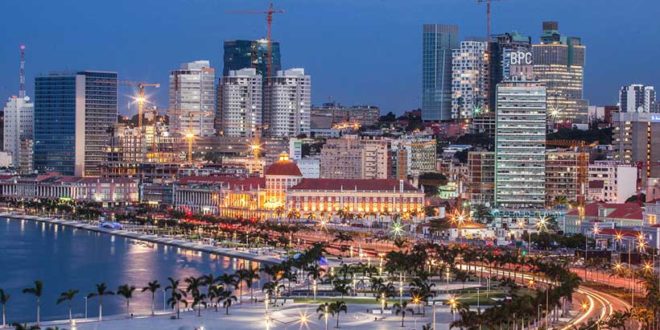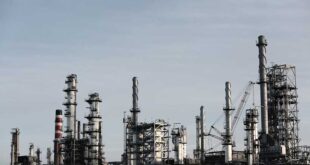Jeff Broth
The African continent comprises a diverse collection of countries, each with its own set of challenges. The governance of individual territories, regions, and countries requires tremendous care and attention, particularly where peace and stability are concerned. Leadership is central to the prosperity of the African continent, particularly economic development. If the authorities are perceived as legitimate, peace and prosperity have a better chance of succeeding. The political culture and climate of the African continent is an important barometer of where Africa will be as an emerging force in the global economy.
Currently, Africa’s 54 nations comprise approximately 25% of the countries making up the United Nations. The interaction of regional and national governance is sacrosanct. Over the years, Africa has undergone periods of violent change, from precolonial to postcolonial, and modern-day leadership. Given that European cartographers drew the boundaries of many African nations, the ties between people and their leaders are often fraught with difficulties. Over the years, African governments have redrawn their boundaries to better reflect cultural, political, and social nuances.
Over time, the conflict-ridden areas throughout Africa have eased. Multiple peace initiatives have supplanted growing conflict, and fomented a new cultural consciousness that espouses growth and development over war and conflict. While conflict still exists across many parts of Africa, the overall climate has cooled significantly from the days of rebellion and genocide. War-torn zones still exist, and development in these areas is riddled with challenges, extreme poverty, and hopelessness.
Conflict and governance are interlinked across Africa. Corruption is a widespread problem, particularly in the Central African Republic, Somalia, and South Sudan. Post-Cold War, major changes began to shape the political and social landscape across Africa. The liberalization of the USSR led to the development of civil society across Africa. Consider the Freedom House report from 1988 (17/50 countries were free or partly free) compared to the report from 2015 (31/54 countries were free or partly free).
Massive and Unprecedented Urbanization across Africa
Governance is also impacted by external forces. Global political movements, particularly the rise of India, China, Russia, and Arab states have impacted African society in many ways. These external actors necessitate economic environments which are conducive to peace and stability. The increasing urbanization of African society is yet another driver of success. The shift from rural to urban development is unprecedented. A report titled ‘Urbanization and Migration in Africa’ found a total of 53% of African emigrants living within Africa as a percentage of the total emigrants population
The migration between people is one of the most notable trends taking place across Africa. In 2017, intra-African migration was strongest in countries like South Africa, Ethiopia, Côte d’Ivoire, Uganda, Nigeria, and Kenya. Factors leading to mass migration include underdevelopment and development. Nigeria currently tops the list of countries in Africa with remittance receipts at approximately $22.3 billion (2018), followed by Egypt at $18.1 billion, Morocco at $7.1 billion, and Senegal at $2.3 billion. The rate of urbanization in sub-Saharan Africa was measured at 37.9% in 2015 and is expected to grow towards 54.8% by 2050. The figure is even greater for the continent as a whole at 40.4% in 2015, and 55.9% by 2050.
Tapping into Africa’s Rich Natural Resources
Africa is a hive of activity with respect to natural resources. South Africa is home to vast supplies of gold and coal, while countries like Angola are rich with diamonds, oil and natural gas. North African countries are the chief suppliers of crude oil, including Algeria, Cameroon, Chad, Egypt, Eritrea, Libya, Tunisia, Sudan and South Sedan. Central African countries like the Democratic Republic of the Congo, the Central African Republic, Botswana, and Angola lay claim to massive diamond supplies, cobalt, and petroleum resources. The issues of extracting these natural resources and marketing them to the world at large hinge upon the effectiveness of transportation networks, infrastructure development, and telecommunications facilities. Many African leaders are investing heavily in these areas, fast-tracking Africa’s learning curve to meet the requirements of major world players like China, the United States, and the European Union.
Spotlight on Angola: An African Giant in The Wings
Angola has substantial resources of liquefied natural gas and oil. It also boasts tremendous economic potential, given its hydropower facilities, agricultural growth and development, fisheries, gold production, iron production, and diamond production. The country also lays claim to significant international financial support a.k.a. FDI. Of course, its reliance on commodities like crude oil means that the country’s revenues are subject to extreme volatility. Among the many other challenges faced by Angola are its rising unemployment rate and social inequalities. The country, like many other African nations lacks a world-class infrastructure, and it has a fragile banking sector.
Leaders like Isabel Dos Santos, chair of Unitel, and other major companies like ZAP, Candando, Sodiba, and Efacac are convinced that the pathway to success is the result of a multi-faceted approach. Education and skills training, rural development, the provision of basic resources, access to financing, eradication of malaria and waterborne diseases, hospitals and paediatric clinics, and combating gender stereotypes are central to the success of Angola. For her part, Isabel Dos Santos has invested heavily in gender equality initiatives, such as promoting women from within the ranks, empowering local communities of women to take charge of their own economic destiny, and fostering a climate where female academic and economic development is encouraged and supported.
Angola’s GDP rate is expected to turn the corner by the end of 2019 and reach 1% growth, following three years of negative growth rates. The inflation rate has declined from 30.4% on average in 2016 to 15.9% forecast for 2019. Public debt in Angola has also declined from 71.9% in 2016 to a forecast total of 69.9% for 2019. And yet, despite these dramatic strides, Angola still battles the demons of volatile prices for commodities. The country generates approximately 90% of its revenues through crude oil exports, but its strongest resources have yet to be tapped – its people. By investing in the youth, women and men through literacy initiatives, educational development, and vocational training, business leaders like Isabel Dos Santos are confident that the economy will turn the corner for the better.
The World Bank report on Angola states that the new administration in the country is supportive of reforms geared towards macroeconomic stability. This is all conducive to economic growth and prosperity. The IMF has offered additional assistance to the country through its Extended Financial Facility (EFF) valued at $3.8 billion. While oil accounts for 33% of GDP and 90% of Angolan exports, there are factors limiting economic expansion in the current year. These include a production limit set by OPEC, and low oil prices globally. The central bank of Angola has adopted a monetary tightening policy to hedge against inflationary pressures, and this is already starting to pay dividends with reduced year-on-year inflation figures reported in January 2019. The World Bank group has committed $1.05 billion towards 9 investment projects across Angola.
 Geostrategic Media Political Commentary, Analysis, Security, Defense
Geostrategic Media Political Commentary, Analysis, Security, Defense





